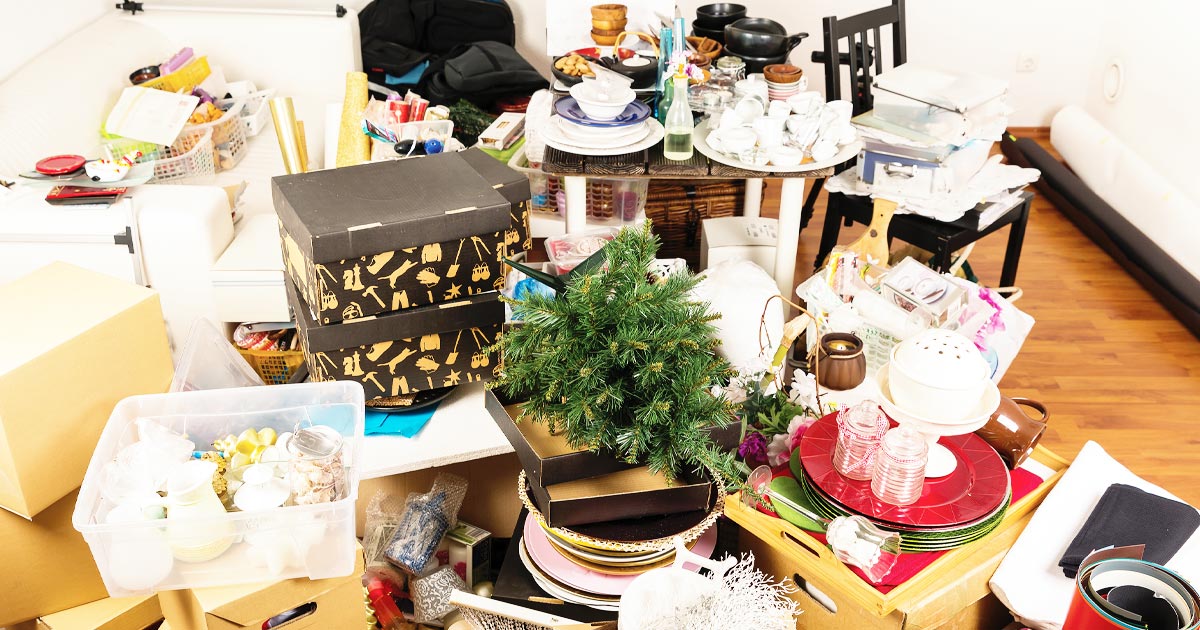By HOLLY ENDERSBY
My first experience downsizing was with two aunts, neither of whom had kids. They’d moved from New Jersey to Idaho, so I could care for them. That worked well for many years, but then my aunt who had recovered from a major stroke began having lots of little strokes and eventually became unable to get around and needed a wheelchair. Meanwhile, her older sister just wasn’t able to cope with all the mishaps, despite me putting lots of assistance in place—going to their doctor appointments, grocery shopping, and cleaning. Finally, the two of them decided sharing an apartment at an assisted living facility would be best.Then the fun began.
Reality Check
How do you go from a three-bedroom house to a tiny, shared one-bedroom home? It’s emotionally wrenching, and sometimes you need a referee.
I remember my husband coming to their house on day three of downsizing, wondering what was taking so long. Then he saw why.
Every item had to be handled, discussed, and debated, no matter how small or inconsequential (in my eyes). We’re talking handwritten recipes here, folks—items one would never use in a full-service, assisted living facility.
But the recipes were about more than food. They were memories of meals shared with family and friends over a lifetime. And taking leave of a former life is pretty darn important.
Allow For Time
My first piece of advice about helping someone downsize is to plan for lots of time to reminisce as you and your loved one begin the journey toward reducing those precious mementos.
Start Early
My second piece of advice is don’t wait until you are forced to move due to ill health. Working at paring down your possessions over time is a realistic way to approach the task. Taking that burden away from your kids or partner or dear friend is a loving act, even though it’s tough.
It took a week, but we finally got my aunts’ possessions pared down to fit into their new apartment.
My mom continued to live in her house after my dad passed away, but then mom began having “episodes,” and staying alone wasn’t working. Mom decided to move into assisted living but utterly refused to downsize, except to only take a few pieces of cherished furniture and decorative items to her new living space.
When my mom died, I’d been sleeping on a sofa in her living room for six weeks, during which time I had begun the monumental task of downsizing the three-bedroom home filled with an amazing amount of clothes, cookware, books, records, gobs of Waterford crystal, a huge collection of tea cups and ceramic decorative items my mom had made over the decades, tons of furniture, and a garage, green house and two large sheds crammed with stuff.
I ordered the biggest dumpster the garbage company had and filled it to the brim with outdated canned food and a freezer full of tiny, freezer-burned items no longer recognizable. I hauled eight car loads of good, useable items to the Salvation Army, took two car loads to friends, and divided up my mom’s Waterford crystal collection and gave pieces to people who had helped mom over the years.
Her favorite coffee shop got a Waterford bowl for tips, her hairdresser got vases, and church friends got other items as well. I saved four Waterford pieces to pass on to her granddaughter, but saved none for myself. Every time I looked at those items in Mom’s house, they shouted “dust me!” They sure weren’t coming home with me.
Be Realistic
My third piece of advice is to be realistic. If your interests are different from your kids, spouse, or partner, pass on those cherished items to people in your life who will appreciate them. It will bring you joy to give these gifts, so don’t cheat yourself of that opportunity. Ask your kids, relatives, and friends what they’d like to have, but don’t expect them to cherish the same things you do.
Do You Really Need It?
My fourth piece of advice is easy and practical: keep a bag or box handy throughout the year, for putting items you come across that you’re never going to use again. Take it to a resale place or nonprofit that supplies folks in need. Or simply throw it away.
My best friend has a closet so loaded with decades of clothes that all the rods are hanging precariously low from the weight. She wore a size eight 40 years ago, and she’s sure not going to wear that size again, but she still hangs on to those clothes.
Give yourself permission to say goodbye to clothes you haven’t worn in years, no matter how much they cost you at the time. It’s ok to be a different size at 70 than you were at 40, so let someone else enjoy the good quality clothes you no longer need.
Clothes aren’t the only things to pass on to those who can use them. What about all those tools you gathered over the decades? Are you really going to need roofing equipment again? How about that chain saw gathering dust for 20 years? Or the three toolboxes jammed with screwdrivers, wrenches, and hammers? You get my drift. Sell them or give them away, so they can be used once again.
My husband gave away some of his pack gear to two women just starting out with packing mules, and it made him feel great to help someone starting to do what he had loved for decades.
So be loving. Share what you can, and let go of the burden of too much stuff! ISI










